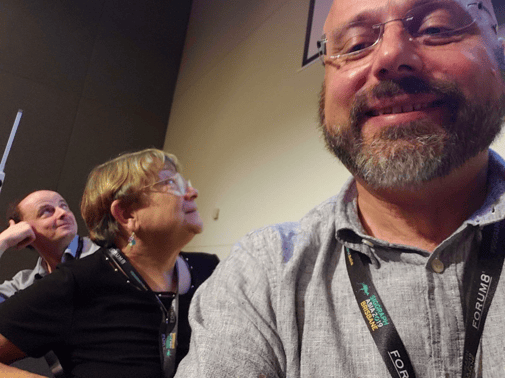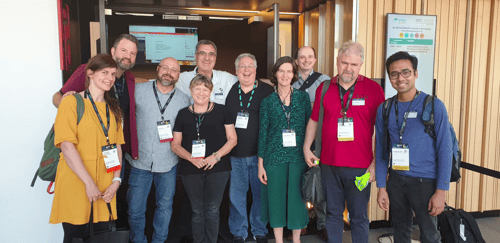We had the pleasure of participating and attending SIGGRAPH 2019 in Asia. Every year, this conference gathers the brightest minds in the graphics community for a week of sharing and learning the latest developments in the industry. With a conference in North America and another in Asia, SIGGRAPH is one of the most highly anticipated events of the year in the graphics and design community.
About SIGGRAPH Asia 2019
With 90+ exhibitors, 700+ speakers, and 10,000+ tech-enthusiast attendees, SIGGRAPH Asia 2019 is no small conference. Heading into its 12th year, this year’s tech-driven conference hosted numerous big-named keynote speakers like Charles Sevior (CTO, Dell EMC), Charlie Han (Product Lead, HoloLens), and Ernest Petti (Studio CG Supervisor, Walt Disney Animation Studios). While these names may not immediately ring any bells, all the speakers at SIGGRAPH are some of the most highly respected and renowned experts in the field of graphics and design.
While it can get quite busy at the office, SIGGRAPH is one of the events that our dev team and Chief Product Officer, Ian Hall, intentionally try to attend each year. Not only does our team genuinely enjoy learning about the latest techniques and technologies surrounding graphics and design, but we are able to take the research from leading scientists and see how we can further improve Yulio for all of our clients.
After a not-so-short flight from Toronto to Brisbane Australia, Ian hit the ground running at SIGGRAPH Asia 2019. Not only was a moderator for a panel and was a panelist himself, but he was also able to participate in a workshop and a technical course during his time at the conference.

Ian sneaking in a quick photo with the other panelists
Now, without further ado, let’s recap our experience and favourite highlights from SIGGRAPH 2019.
Workshop with Professor Joaquim Jorge
This whole day affair was our personal highlight from the whole conference, since it was right up both our customer’s and our alley. Currently, Artificial Intelligence (AI) and Virtual Reality (VR) has been one of the most popular areas in computing - especially when in combination together.

Workshop Presenters (left to right): Stefanie Zollmann, Paul Debevec, Ian Hall, Jacki Morie, Joaquim Jorge, Andrew Glassner, Janet Wiles, Anthony Steed, Mark Billinghurst, Arindam Dey
Ever since more and more people started using chatbots and the historic release of the first Oculus Rift, AI and VR have been clearing a path of what level of immersion we can possibly achieve through the power of technology. Thanks to the majority of smartphones now supporting Augmented Reality (AR) and VR capabilities, immersive-display technologies are now available to the general population versus the very few tech-enthusiasts willing to make the investment. While these advanced technologies have come so far in just a matter of years, there are still points of friction that need to be smoothed out.
Leading experts have found that possibly it is the combination of the technologies that could pose a solution to the existing barriers. By intertwining various intelligence techniques, user interfaces and tools, brand new methods for immersive and photorealistic visualizations are emerging to be utilised in various industries like entertainment, engineering, and education etc.
Course on Material Capture and Representation
The main objective of this course was to provide an overview of the current state of material capture and representation, specifically for rendering. As any designer would understand, there are times a certain material doesn’t mimic what it actually would look like in real life. From various woods to fabrics, glass to plastics, industry experts are still cracking down on various techniques to achieve the most accurate representation of certain materials.
We were so excited to participate in this course and learn from our good friends Giuseppe Claudio Guarnera, Gregory J. Ward, Dar’ya Guarnera, and Mashhuda Glencross. From advanced knowledge in machine learning to state of the art work in data collection and BRDF’s, the course was truly a surge of useful information on how we can continue making visualizations better than it was before.
Ian also had the opportunity to share all that we’ve learned here at Yulio in regards to how VR is transforming architecture and interior design through the power of capturing materials accurately. While various textures may seem realistic using traditional visualization techniques, the rules are different when it comes to VR:
- Visual artefacts stand out more
- Flat textures look less realistic
- Clients demanding high-quality images in less time
Participating in this course and hearing from leading researchers in the field kindled a lot of inspiration on how we can continue down the path of even more photorealistic visualizations.
Panel Discussion and Moderating
Back to the first topic on AI, VR and the combination of the two, Ian was able to share some of our experiences and findings from Yulio as well as moderate a discussion on the implications of combining the two technologies. The purpose of the discussion panel was to explore the good and bad implications of what would happen when you would combine both AI and VR together.
One topic that was particularly interesting was exploring the possibilities of creating a deeper human connection while immersed in VR. Through actuators and vibrations, there is a real possibility that a VR user could start experiencing what seems to be a representation of emotion while in a virtual setting.
During his time as a panelist, Ian was also able to share how these technologies are transforming business. As Ian likes to say, he was looking at the awesome research scientists are conducting and looking into how we can transform it into every day business applications. Not only was he able to share our experiences with our partners at DSAI and how they have been able to use VR and Yulio to rid points of friction, but he also shared how we at Yulio use AI in our latest release.
Yulio Jump is our unlimited cloud-based rendering license, giving users the ability to render their design in minutes. Without getting too technical, Yulio Jump is only possible through a technology called “de-noising” driven by a machine learning algorithm which is an application of AI. With ground-breaking discoveries like de-noising, AI is making this category of real-time VR visualizations possible.
Final Thoughts
As always, this annual conference never disappoints. SIGGRAPH Asia 2019 was genuinely a great experience where we were able to learn from research from leading experts and see how we can translate this into an every day business application. We genuinely are excited for 2020 and what we can look forward to as the graphic and design industry continues to advance.
Here at Yulio, we strive for excellence in performance and integrity when it comes to our product, and customer service. To learn more about how VR can enhance your business workflow, sign up for our FREE 5-day email course. To learn more about us and what we offer, please visit our page or take our product tour.



